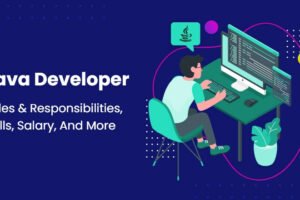Recently, fintech software development is increasingly discussed by financial organizations, and this is not at all surprising. At the end of 2019, over 36% of all mobile users made recurring payments through apps, and this trend has only intensified over time. To stay competitive in the new realities, many financial companies have begun to think about moving to a mobile platform, and if you want to join them, you should know some nuances.
We will discuss these in our article:
Benefits of Fintech Software Development for:
- By developing high-quality custom fintech software, banks can automate many manual tasks and reduce costs eventually. Also, the availability of such a mobile service contributes to faster processing of financial transactions and the automation of many business processes, which has a positive effect on customer loyalty.
- Considering the widespread use of mobile devices in recent years, bank customers expect to manage their finances through a convenient application. With such a service, they get not only this, but also the ability to control their expenses, and regular payments around the clock – minimizing the need to contact banks to clarify any information. Users’ lives are also simplified thanks to the automation of various transactions, be it monthly payments for utilities, loans, etc.
6 Types of Fintech Applications:
- Personal finance apps help users keep track of their expenses in detail with an intuitive interface and tips aimed at saving money. These fintech applications will help people to improve finances.
- Investment apps allow you to track fluctuations in stock markets as well as the value of currencies and cryptocurrencies. Thanks to AI-based recommendations implemented in such services, you can more efficiently invest your money by focusing on one type of investment.
- Lending-enabled apps rely on chatbots to dramatically speed up and simplify the process of obtaining loans. Here, the creditworthiness of customers has been assessed automatically – thanks to artificial intelligence, so users can apply for microloans or instalments on their own – without interacting with the staff of a bank or other financial institution.
- Applications with the ability to transfer payments provide users with advanced options for managing their finances. Such mobile digital products can support transactions in both conventional currencies and cryptocurrencies. Through the machine learning applied here, customers can assess the riskiness of each payment. Moreover, these services can automate any money transfer or distribute it across several accounts.
Key Areas of Fintech Software Development that will give your users a delightful experience
Niche selection
Before we start your fintech software development, you need to decide on your preferred niche. We will discuss the future project and find out what exactly it will be used for. Depending on what product you need—a service for personal finance management, trading or something else—our team will understand which functions will be the most priority for him.
Market analytics
After collecting information on the market segment you are interested in, including data on the target audience and competitive applications, our specialists will draw up a technical task. Based on this document, we will develop your product.
Prototyping
When developing an application prototype, we focus not only on its functions and tools but also on high-quality UX / UI. Since we are talking about a product that is quite difficult to understand, we do our best so that even financially inexperienced users can understand its interface.
Rendering design elements
At this stage, our designers render the interface elements of the application per the approved visual style. Along with this, we also implement service navigation, which would simplify the user experience of your customers to the maximum.
Programming
As part of fintech software development, we consider your needs when choosing a technology stack. Our developers can create both a native application for a specific mobile platform (iOS or Android) and a cross-platform service that supports both operating systems.
Examples of popular personal finance apps:
- Money Lover. This application will help you do more with your money. With this app, not only can you make payments and keep track of everything in one place, but all the information is securely stored on Dropbox’s cloud storage.
- This service is ideal for users who want to share their expenses with friends, roommates, relatives, etc. Here, you get reports on transactions within the overall budget in the form of simple and clear notifications.
- Money Manager. The main feature of this service is that it allows you to digitize data from your receipts. To recognize the payment information, simply take a photo of the receipt and the application will automatically add it to the proper expense category.
- This application has extensive functionality for accounting for personal and business expenses, and also supports integration with accounting services. With it, you can book flights, hotels and control many other travel-related payments.
How to Make Your Apps Easy and Understandable for the User
- Personalize your app based on user behaviour in the context of finance.
- Engage customers by introducing gamification elements such as financial achievement status badges into your product (as Monobank does) to make people want to use the app more often.
- Constantly collect feedback from your target audience to see which features or interface elements interest users the least. This will allow you to effectively optimize your application over time.
- Your fintech software should be able to send timely and relevant push notifications. As fintech becomes more mainstream, consumers are more and more accustomed to getting information on their phones via push notifications. Fintech products that offer this feature are better at retaining customers’ attention–and their business. For example, a personal finance app can remind users when bills are due or about a credit card payment so that they don’t miss it. This is called micro-reminding because you can set reminders for specific tasks throughout the day instead of having to do them all at once later in the week, which is far less efficient for people.
Conclusions
Despite widespread digitalization, the fintech software development industry is still open to new promising projects. And although fintech software development has many risks, our team of professional fintech software developers will help you overcome these difficulties and bring a worthy product to the market.















Add Comment